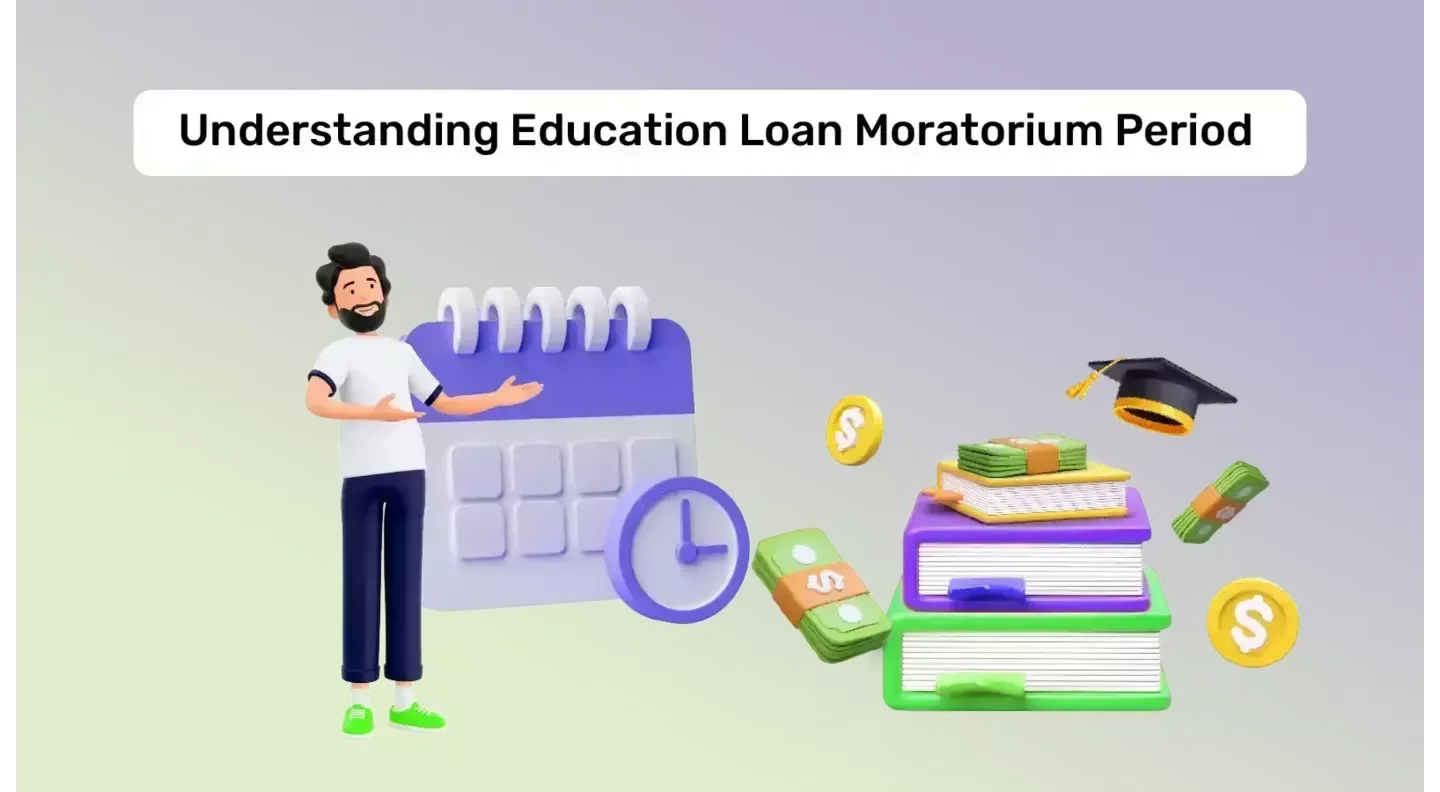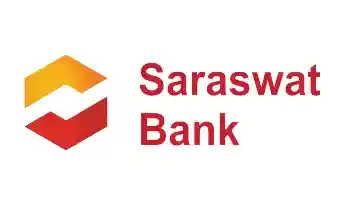Get instant loan offer suitable to your profile !


On this Page:
Understand the moratorium period in education loans, what it means, why it matters, and how it impacts your repayment all explained by GyanDhan.
Many students are unaware that education loans come with flexibility while they are studying and don’t have to start repaying loans after the loan has been sanctioned. Instead, it is after the moratorium period is over that the borrowers have to start making EMI payments.
Therefore, the moratorium period is an important factor associated with education loans, which a student borrower must learn in advance. During moratorium period on education loans, students don’t have to repay the principal amount of the education loan. Since the students must find a job after studying for loan repayment, the moratorium period includes the course duration plus 6 to 12 months after completing the course.

The education loan moratorium period is when a borrower is exempted from repaying the loan. ‘Moratorium’ means temporary prohibition of an activity; hence, the moratorium period in education loans refers to the interval of time in which the borrower need not repay the loan. During this period, the banks do not demand any repayments from the students. The Reserve Bank of India has made it mandatory for all government banks to offer a moratorium period on education loans.

However, knowing just “what is moratorium in loan?” isn’t enough. It’s important to make a better repayment plan during the moratorium period, which can be done only when you know its significance.




During the education loan moratorium period, students are not required to pay EMIs, but interest continues to accrue. Therefore, starting repayment earlier can reduce the total interest paid. Banks offer various repayment options to suit different borrowers' preferences:




Choosing the right repayment option can help manage the financial burden effectively.

Let us understand the concept and purpose of the education loan moratorium period with an example.
For instance, Raj a study abroad applicant took a secured education loan of INR 50 Lakh for his Master's course in the USA in January 2024. Now Raj does not need to start repaying his loan during his course, instead, his repayment will start 12 months after his course is completed. Which means his repayment will start in 2027.
The lender understands that the borrowers cannot repay the loan immediately after their studies. Hence, students are given a moratorium period to find a job and start their repayments after the moratorium period.

People commonly confuse a moratorium period with a grace period. It is vital to know that a grace period is a set duration after payment is *outstanding payment, where a payment can be made without any penalty charged.
On the other hand, in a moratorium period, a borrower doesn’t have to pay during the course period. Also, a moratorium period length can vary from weeks to months, whereas a grace period length is generally 15 days.
*Outstanding payment refers to the unpaid balance amount of the current due.
| Feature | Moratorium Period | Grace Period |
|---|---|---|
|
Duration |
Course duration + 6 or 12 months |
15 days |
|
Interest Accrual |
Interest continues to accrue and is added to the loan balance. |
Interest may accrue, depending on the loan terms. |

A moratorium period in education loans provides several key benefits that can significantly ease the financial burden on students and their families. Here’s a detailed look at these advantages:
The primary advantage of a moratorium period is that it alleviates the financial pressure on students. Without the need to make repayments while studying, students can focus on their education without worrying about immediate loan repayments.
The moratorium period gives students time to secure employment and establish a steady income stream before they start repaying their loans. This period allows for more effective financial planning and budgeting, ensuring that students are better prepared for loan repayments.
During the moratorium period, students are not required to make any payments, which means there is no risk of defaulting on loan payments. This helps maintain a positive credit score, which is crucial for future financial endeavors, such as applying for other loans or credit cards.
Often, parents are co-applicants in education loans. The moratorium period ensures that they do not have to bear the repayment burden while the student is still studying. This can be especially beneficial for families managing multiple financial commitments.
Some banks offer the option to extend the moratorium period under certain conditions, such as extended study duration or pursuing higher education. This additional flexibility can provide further financial relief and accommodate the student’s academic and career plans.
Without the immediate pressure of loan repayments, students can take the time to find jobs that are better suited to their qualifications and career aspirations rather than settling for the first available opportunity.
A moratorium period education loan is a significant feature that provides various financial, psychological, and strategic benefits. It not only supports students in managing their finances during their studies but also ensures that they are better prepared for loan repayments, thereby fostering a more successful transition from education to employment.

The moratorium interest capitalization in education loan differs for different types of lenders. Sometimes it can also vary within the same type of lender. Moratorium periods of different lenders are as follows -



Several study-abroad aspirants often tend to miss crucial topics such as a moratorium period in education loans, margin money, processing fees, and many more. It is important for borrowers to be familiar with such concepts to make an informed decision. We at GyanDhan understand that taking an education loan is a huge financial decision therefore, it is important to cover all crucial factors before choosing a lender.
Our expert education loan counselors will evaluate your profile and select the best education loan lender for you and if needed we will also customize an education loan for you. And the best part is we do not rely on one lender instead we initiate your loan process with 3-4 lenders in a single go. We make sure that you get the best education loan deal. Not only this, we provide end-to-end assistance, from evaluating your profile to the actual disbursement we are always by your side. Wondering how to start? Check your loan eligibility today to get started.

There are no fines for early repayment of education loans. Starting the repayment as early as possible would help the students lessen their financial burden. However, it is important to note that the moratorium period is not interest-free. Therefore, the earlier a student starts the repayment of the loan, the lesser will be the interest charged on the rest of the education loan amount.
The moratorium period is to give a necessary gap to borrowers before repayment starts. The moratorium is meant to equip the student financially to begin their repayment. In the moratorium period, the student can find a job or any other financial means to repay the education loan.
The moratorium period includes the course’s length plus 6-12 months after course completion. Although the moratorium period varies for different lenders, the moratorium period is 6-12 months in typical cases.
The moratorium period begins when the student commences a course. The moratorium period in education loans is generally course duration plus 6 months or 1 year for different lenders.
Depending upon the student’s situation and the lender’s decisions, the moratorium period can be extended in exceptional cases. The key idea behind the moratorium itself is to assist the borrower in difficulty, and banks may offer a grace period if there’s a valid reason behind the plea.
Not always. There will be simple interest for the moratorium period. In education loans from public banks, the student need not repay during the moratorium period. There will be interest repayments in the moratorium period for unsecured education loans from private banks and NBFCs.
Education loans, home loans, personal loans, etc are eligible for a moratorium period. Eligibility and specific terms may vary by lender, so it's important to check with your bank or financial institution for detailed information.
Yes, interest is charged during the moratorium period in education loans. The interest accrues and is added to the loan balance, increasing the total amount to be repaid once the repayment period begins.
Check Your Education Loan Eligibility

Ask from a community of 10K+ peers, alumni and experts
Trending Blogs
Similar Blogs

Network with a community of curious students, just like you
Join our community to make connections, find answers and future roommates.. Join our CommunityCountry-Wise Loans
Best Lenders for Education Loan

ICICI Bank

Axis Bank

Union Bank

Prodigy

Auxilo

Credila

IDFC

InCred

MPower

Avanse

SBI

BOB

Poonawalla

Saraswat